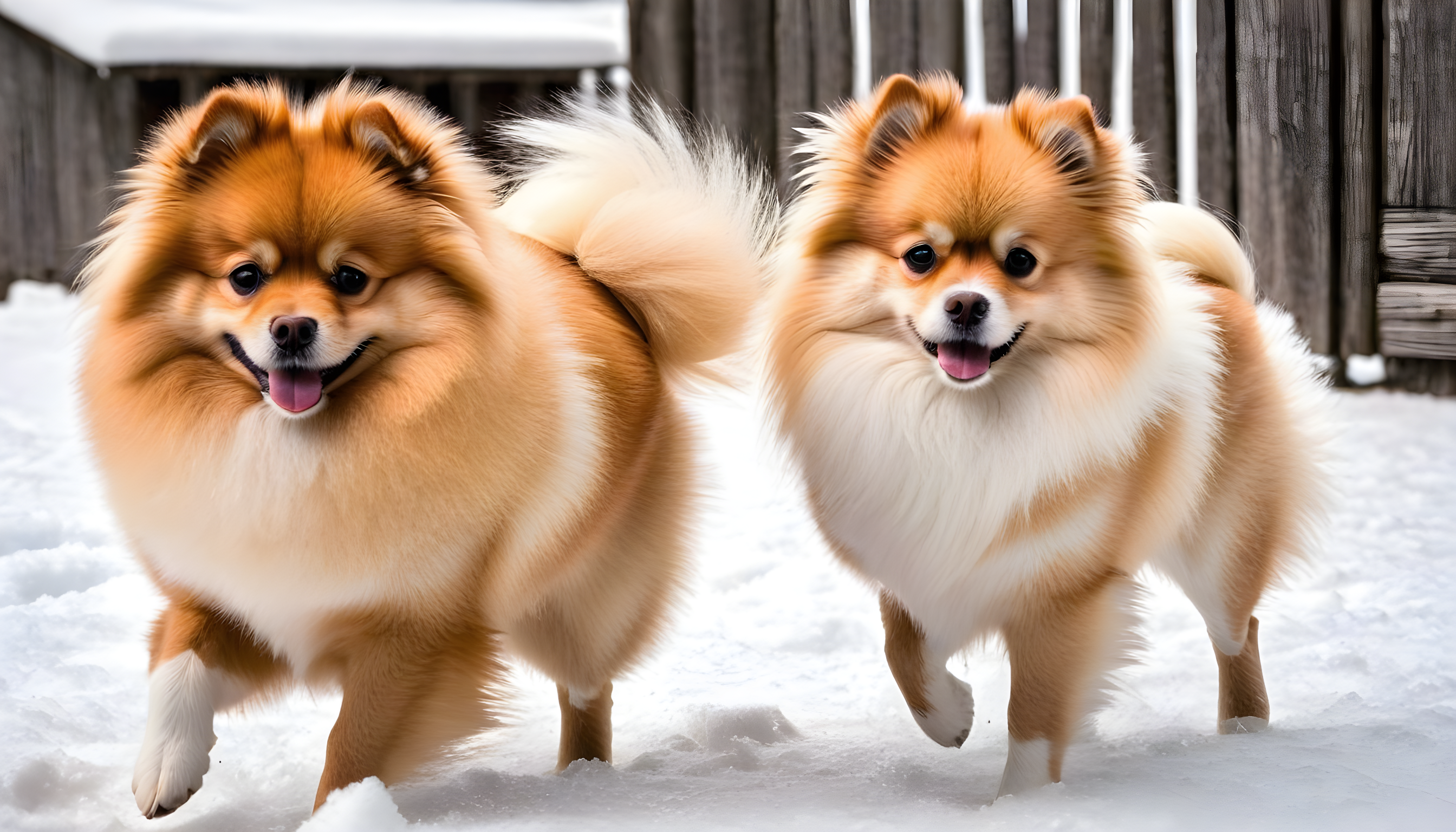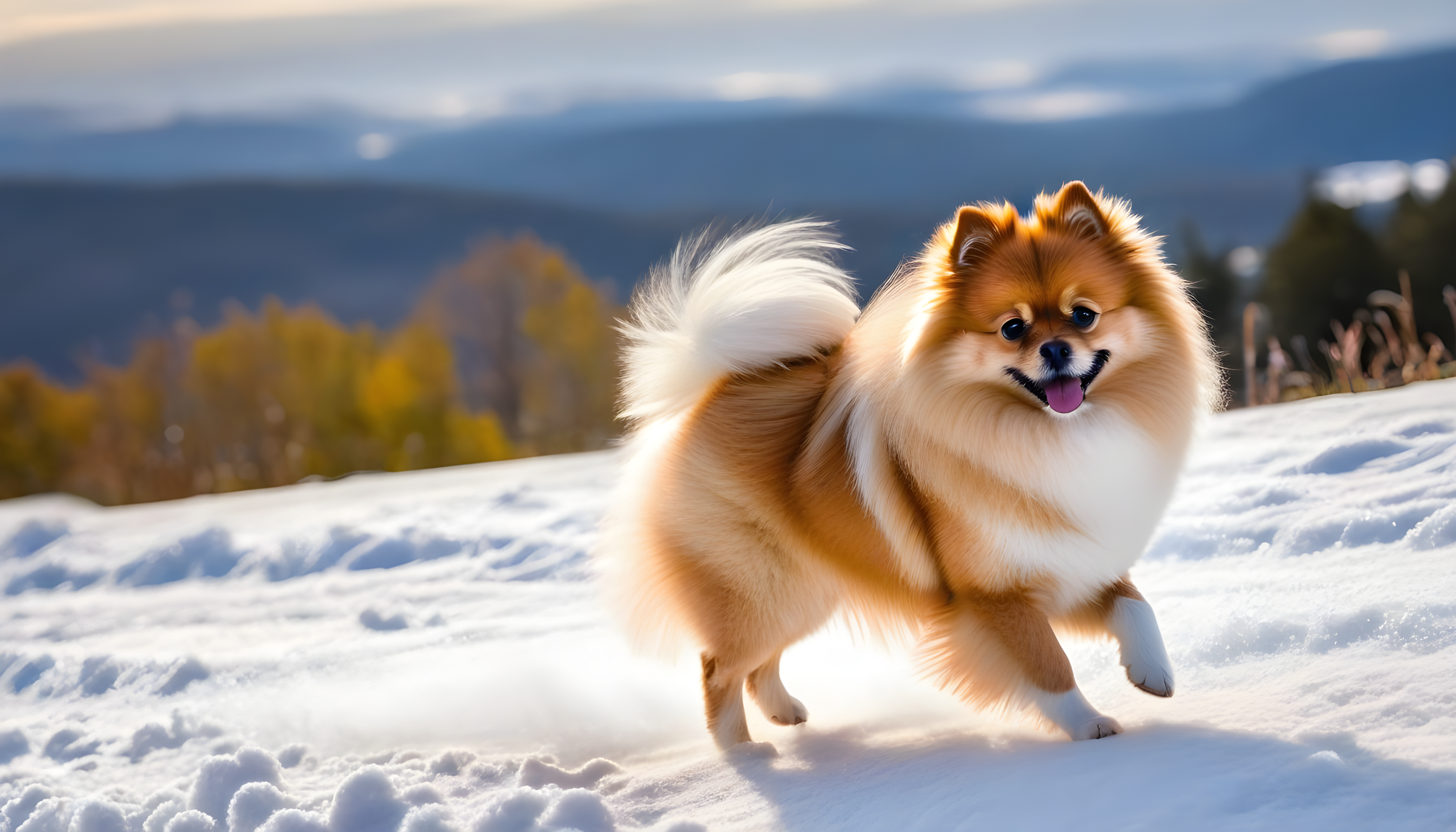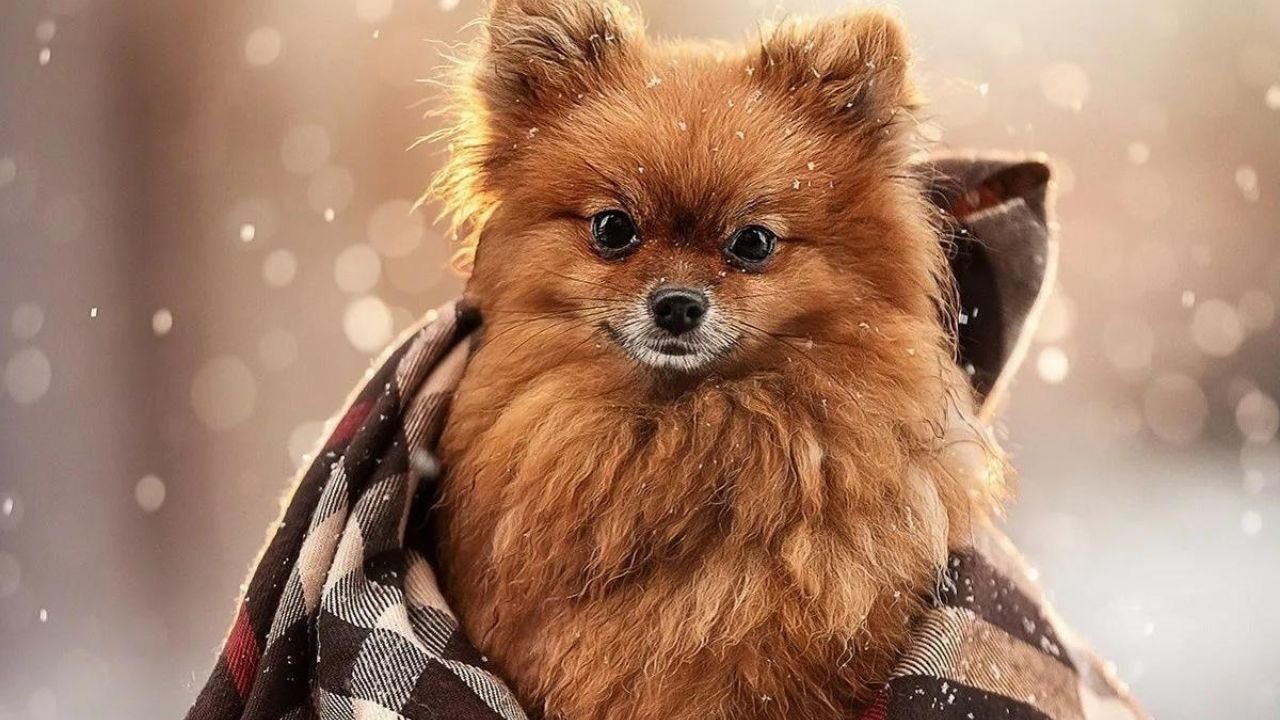When it comes to Pomeranians and cold weather, there is some conflicting information out there. Some people claim that these fluffy little dogs are well-suited for chilly climates due to their ancestry as Arctic sled dogs, while others argue that they are more sensitive to temperature extremes. So, do Pomeranians actually like the cold? Let’s take a closer look at the factors that influence their comfort in cold weather.
The Origin of Pomeranians

Pomeranians are descended from the ancient Spitz family of dogs, which were originally bred in the Arctic region to withstand harsh conditions. These dogs have many features that help them combat cold weather, including a thick double coat, which acts as insulation against low temperatures.
The origin of Pomeranians can be traced back to the German Spitz family of dogs, which are believed to have originated in the frozen Arctic regions of Iceland and Lapland. They were working dogs used for various tasks such as pulling sleds, hunting, and herding. The breed acquired its name from the association with the area known as Pomerania. Pomeranians have a rich history and have been recognized by various kennel clubs worldwide. Their lineage can be traced back to the Spitz sled dogs that were imported to Europe.
Coat and Cold Tolerance
Pomeranians have a luxurious double coat consisting of a dense undercoat and a longer outer coat. This coat provides excellent insulation and keeps them warm even in chilly environments. However, it is important to note that not all Pomeranians have the same tolerance for cold weather.
While some Pomeranians may enjoy playing in the snow and feel comfortable in colder temperatures, others may be more sensitive to the cold. Factors such as age, health, individual preferences, and the particular climate can influence a Pomeranian’s tolerance for cold weather.
The coat of Pomeranians plays a crucial role in their cold tolerance. With a thick double coat consisting of a dense undercoat and a longer outer coat, Pomeranians are equipped to withstand chilly temperatures. However, individual Pomeranians may differ in their tolerance for the cold, influenced by factors such as age, health, and climate.
The Anatomy of a Coat
Coats, whether on animals or humans, come in various forms, each serving a unique purpose in cold tolerance. From the thick fur of Arctic foxes to the insulating layers of human winter wear, these outer coverings play a crucial role in providing warmth and protection against the cold.
Adaptations in Wild Animals
Nature has equipped many wild animals with specialized coats to survive in extreme climates. Polar bears, for instance, boast a dense layer of fur and a thick layer of fat, offering unparalleled insulation against the Arctic cold. Understanding these adaptations helps us appreciate the resilience of wildlife in harsh conditions.
Domesticated Breeds and Cold Tolerance
When it comes to our pets, recognizing the cold tolerance of different breeds becomes essential. Some dogs, like the Siberian Husky, have natural cold resistance, while others may need extra care during winter. Knowing your pet’s coat type and how to cater to its needs ensures a comfortable and healthy winter for your furry friends.
Factors Influencing Cold Tolerance
Genetics and environmental factors play a significant role in determining an individual’s cold tolerance. The genetic diversity in coat types contributes to the wide range of cold resistance observed in various species. Additionally, environmental conditions can impact how effectively a coat retains heat, emphasizing the importance of understanding both aspects.
Winter Coat Care Tips
Maintaining a winter coat, whether on a pet or oneself, requires specific grooming practices. Brushing and cleaning different coat types appropriately, coupled with a diet rich in nutrients, contribute to optimal cold tolerance. These simple yet crucial steps can make a significant difference in staying warm during the winter months.
Choosing the Right Coat for Winter
Selecting the right coat is a crucial step in ensuring warmth and comfort in cold weather. Whether it’s for your pet or yourself, considerations such as insulation, water resistance, and proper fit play pivotal roles. This section provides valuable tips for making informed choices when it comes to winter wear.
Clothing for Humans in Cold Climates
Humans, too, have evolved innovative ways to tackle cold climates. Understanding the science behind winter apparel and mastering layering techniques can transform a freezing experience into a cozy one. Unravel the secrets behind staying warm while embracing the beauty of winter landscapes.
Temperature Limits
As a general guideline, it is safe for Pomeranians to be outside when the temperatures are above 40 degrees Fahrenheit (4 degrees Celsius). However, when temperatures drop below this threshold, it is advisable to limit their time outdoors. Prolonged exposure to freezing temperatures can put Pomeranians at risk of hypothermia and frostbite, especially in their extremities like ears, paws, and tails. It is important to monitor your Pomeranian closely in cold weather and bring them indoors if they show signs of discomfort.
Temperature limits for Pomeranians vary based on factors such as age, health, and conditioning. While they can generally tolerate cold temperatures, it’s important to be cautious in extreme conditions. Pomeranians may struggle with heat and humidity, as their thick coat hinders heat dissipation. It’s crucial to monitor their comfort and provide appropriate shelter and climate control accordingly.
Wind and Cold

One factor that can significantly affect a Pomeranian’s comfort level in the cold is wind. Pomeranians have a dense coat that helps protect them from the cold, but if it is windy, the wind can lift their fur and create gaps, allowing the cold air to reach their skin. In such conditions, Pomeranians may feel cold more quickly. It is essential to shelter them from strong winds or consider using protective clothing, such as dog sweaters or jackets, to keep them warm and cozy.
The combination of wind and cold can have a significant impact on how we perceive temperature and its effect on our bodies. Wind chill, a measure of how cold it feels due to the wind’s impact on heat loss from exposed skin, plays a crucial role in determining our comfort and safety in chilly conditions. As wind speeds increase, it accelerates heat loss, making the air feel colder than the actual temperature.
Winter Care Tips for Pomeranians
Limit outdoor time
As mentioned earlier, when temperatures drop below 40 degrees Fahrenheit, it is best to limit your Pomeranian’s time outside.
Provide appropriate shelter
If your Pomeranian enjoys spending time outdoors, make sure they have access to a warm and dry shelter. The shelter should be well-insulated, elevated off the ground, and protected from wind and moisture.
Protect their paws: Cold surfaces, such as snow and ice, can be harsh on a Pomeranian’s paws. Consider using booties or paw wax to protect your paws from the cold and chemicals used to melt ice.
Keep them hydrated
Cold weather can cause dehydration, so make sure your Pomeranian has access to fresh water at all times. Check their water bowl frequently to ensure it doesn’t freeze.
Moisturize their skin and coat: The dry winter air can cause your Pomeranian’s skin and coat to become dry and brittle. To maintain healthy skin and coats, use shampoos and conditioners that are hydrating and made especially for dogs.
Maintain a consistent exercise routine
Regular exercise is essential for a Pomeranian’s physical and mental well-being. If it is too cold to go for walks outdoors, engage them in indoor activities or provide them with interactive toys to keep them active and stimulated.
Consult with a professional
If you have any concerns about your Pomeranian’s well-being during the winter months, it is always best to consult with a veterinarian or a professional dog trainer. They can provide personalized advice based on your Pomeranian’s specific needs.
Conclusion
While Pomeranians have some inherent cold tolerance due to their Arctic heritage, it is important to recognize that individual preferences and other factors play a significant role in determining their comfort in cold weather. Monitoring your Pomeranian closely, providing appropriate shelter, and following the recommended winter care tips will help ensure their well-being during the colder months. Remember, every Pomeranian is unique, so it is crucial to pay attention to their individual needs and make adjustments accordingly.
FAQ
Do Pomeranians like the cold?
Pomeranians have a thick double coat that provides insulation, making them fairly tolerant to cold weather. However, individual preferences may vary, and some Pomeranians may prefer milder temperatures.
How cold is too cold for Pomeranians?
Pomeranians are generally comfortable in cool to cold weather, but extreme cold can be challenging for them. It’s advisable to limit their exposure to temperatures below freezing and to use doggy clothing to keep them warm during colder seasons.
Do Pomeranians need winter coats?
In colder climates, Pomeranians may benefit from wearing winter coats or sweaters to keep them warm during walks or outdoor activities. It’s especially important for older or smaller Pomeranians with less body fat.
Can Pomeranians play in the snow?
Many Pomeranians enjoy playing in the snow, but it’s essential to monitor their time outdoors and ensure they don’t get too cold. Paws can be sensitive to ice and snow, so wipe them off to remove any salt or ice melt after outdoor activities.
How can I tell if my Pomeranian is too cold?
Watch for signs of discomfort such as shivering, lethargy, or seeking warmth. If your Pomeranian shows signs of being too cold, it’s crucial to bring them indoors or provide a warm place for them to rest.
Should I adjust my Pomeranian’s diet in cold weather?
Some Pomeranians may require more calories in colder weather to maintain their body temperature. Consult with your veterinarian to determine if any dietary adjustments are necessary based on your Pomeranian’s individual needs.
Can Pomeranians get frostbite?
Pomeranians are susceptible to frostbite, especially on their paws, ears, and tail. Limit outdoor exposure in extremely cold weather, and consider using dog boots to protect their paws.
Are there specific considerations for Pomeranian puppies in the cold?
Pomeranian puppies may be more sensitive to extreme temperatures. Monitor them closely, provide extra warmth, and limit outdoor playtime in very cold weather.
How should I prepare my Pomeranian for winter walks?
Dress your Pomeranian in a suitable winter coat or sweater, and consider using dog boots to protect their paws. Keep walks shorter in extremely cold conditions and always dry them off after coming inside.
Should I use a heating pad or blanket for my Pomeranian in winter?
Pomeranians appreciate warmth, but it’s crucial to use heating pads or blankets designed for pets and to monitor their use to prevent overheating. Consult with your veterinarian for advice on providing additional warmth during colder months.

